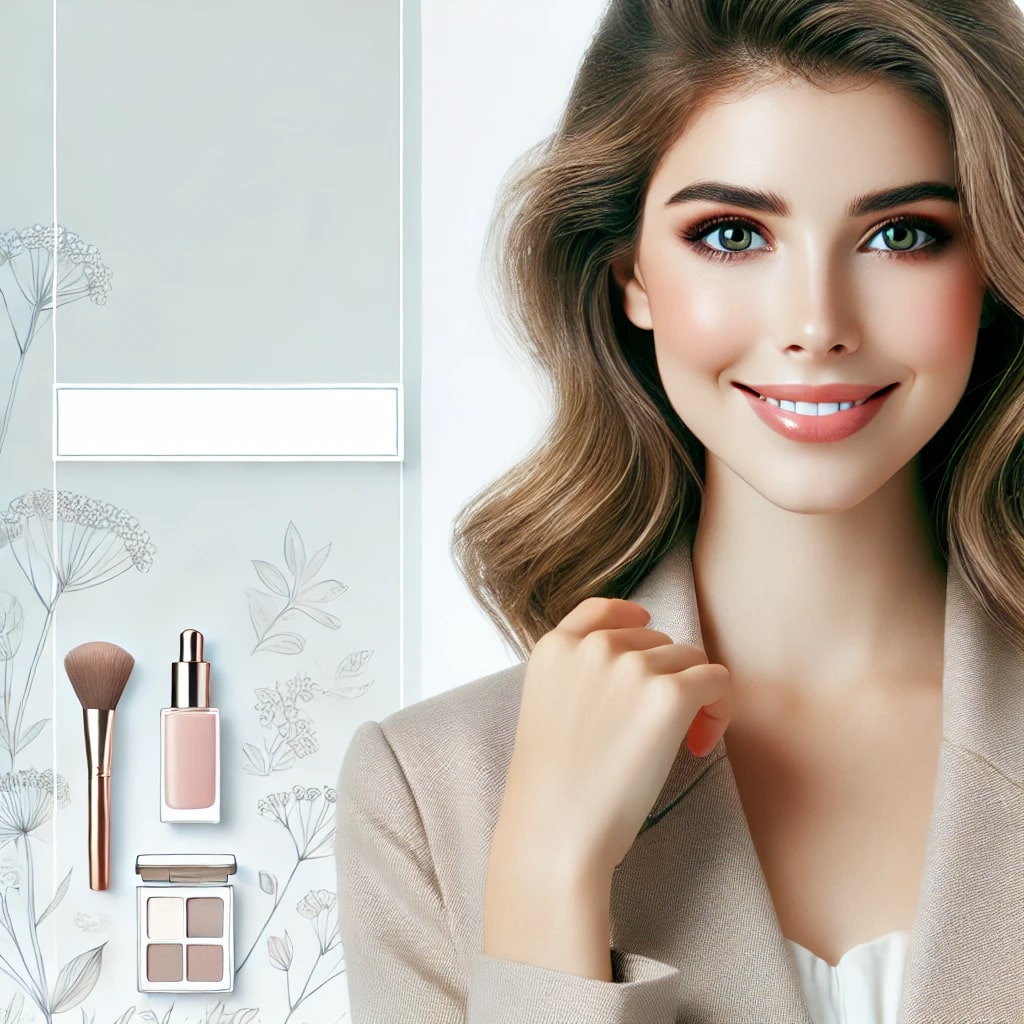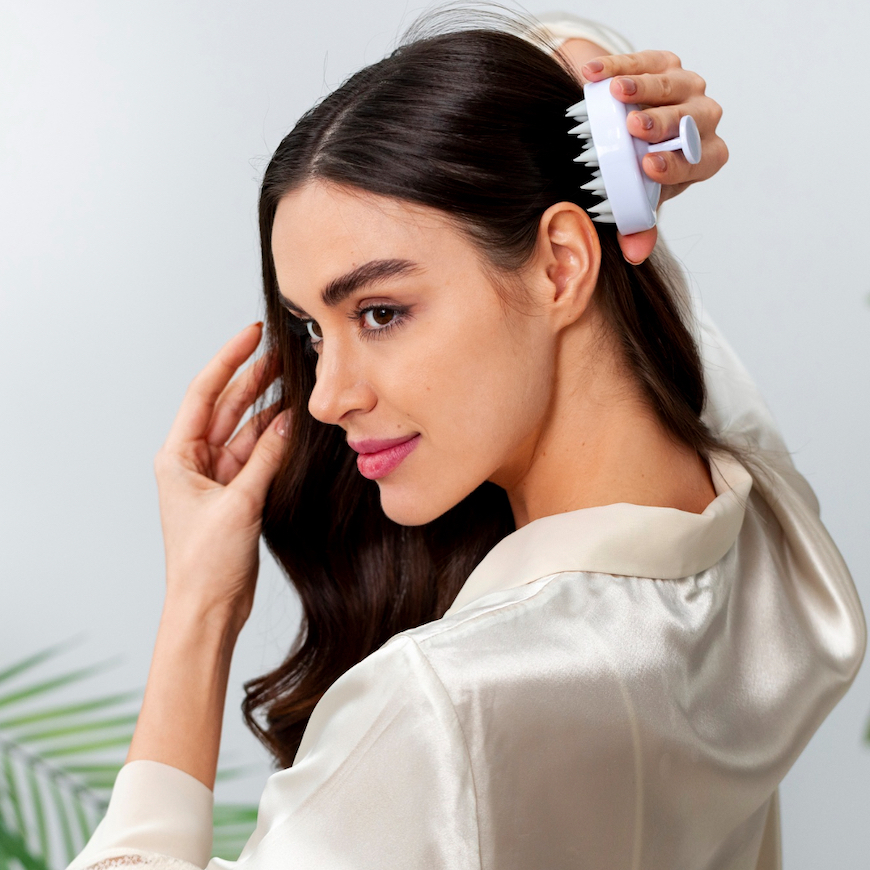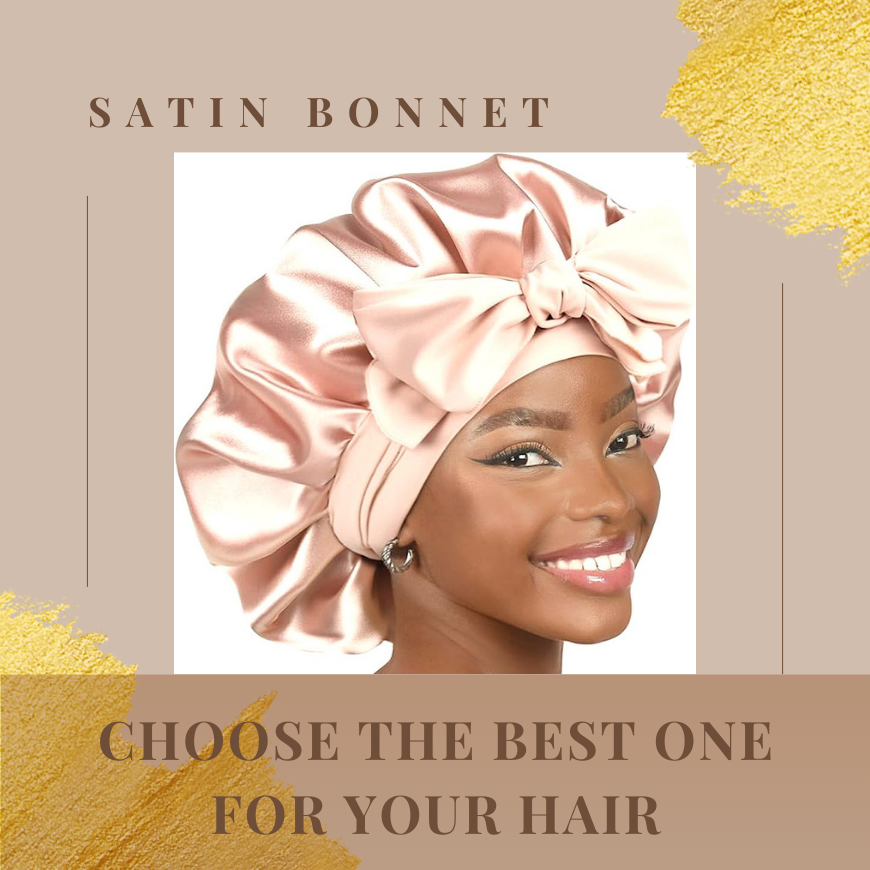Your scalp is the secret garden where healthy hair grows. Yet, most of us focus on our shampoo, conditioner, and styling products without giving our scalp the attention it truly deserves. In today’s post, we’re diving deep into how to create an effective, natural scalp care routine that not only soothes irritation and dryness but also promotes hair growth. Whether you’re battling dandruff, experiencing hair thinning, or simply want to boost your overall hair health, this comprehensive guide is for you.
Why a Healthy Scalp Matters
Your scalp is more than just the skin under your hair; it’s the nourishing bed where hair follicles thrive. Think of it like soil in a garden: if the soil isn’t well cared for, the plants won’t grow strong. In the same way, an imbalanced scalp, whether too oily, too dry, or irritated, can lead to weak hair, breakage, and even hair loss.
A proper scalp care routine addresses several concerns:
- Dandruff and Flakiness: Caused by build-up, dryness, or even fungal imbalances.
- Irritation and Itchiness: Often results from harsh products or environmental factors.
- Hair Thinning: A compromised scalp environment can impede nutrient delivery to hair follicles, slowing hair growth.
- Oily or Dry Scalp: Knowing your scalp type helps you select the right products and frequency of washing.
Taking time to nurture your scalp with a consistent care routine can lead to stronger, fuller hair. Experts agree: healthy hair begins at the root.
Understanding Your Scalp Type
Before you can design your ideal scalp care routine, it’s essential to determine your scalp type. Generally, there are three types:
1. Oily Scalp
If you notice your hair gets greasy by the end of the day—even shortly after washing—it’s likely your scalp produces excess sebum. An oily scalp can lead to clogged follicles and may sometimes result in acne or folliculitis. For these individuals, a gentle yet clarifying shampoo is key to maintaining a healthy scalp.
2. Dry Scalp
A dry scalp typically feels tight, itchy, and may show small flakes. This condition can be exacerbated by harsh shampoos, cold weather, or even the overuse of styling products that strip away moisture. A dry scalp benefits from extra hydration and products designed to restore moisture balance.
3. Normal/Combination Scalp
A normal or combination scalp doesn’t lean too oily or dry overall. However, even if your scalp seems balanced, periodic cleansing and gentle exfoliation can help remove product buildup and environmental pollutants.
Understanding your scalp type will not only help you pick the right hair care products but will also determine how often you should wash, condition, and treat your scalp.
Common Scalp Issues and Their Causes
1. Itchy Scalp
An itchy scalp can feel like a never-ending mosquito bite. Common culprits include:
- Dryness: Harsh shampoos, cold weather, or overwashing strip natural oils.
- Product buildup: Residual styling products clog pores and irritate the scalp.
- Fungal infections: Yeast overgrowth (hello, dandruff!) loves oily, warm environments.
2. Flaky Scalp
Flakes aren’t just a winter problem. Causes include:
- Dandruff: A fungal infection (Malassezia) triggers excess skin cell shedding.
- Seborrheic dermatitis: A more severe form of dandruff with redness and greasy flakes.
- Psoriasis: Autoimmune-related thick, scaly patches that extend beyond the scalp.
3. Dry, Tight Scalp
If your scalp feels like the Sahara Desert, blame:
- Overwashing: Stripping natural oils with daily shampooing.
- Hard water: Mineral deposits dry out the scalp.
- Heat styling: Blow dryers and flat irons zap moisture.
4. Hair Thinning
A neglected scalp can lead to:
- Follicle miniaturization: Inflammation shrinks hair follicles over time.
- Nutrient deficiencies: Your scalp needs vitamins and hydration to support growth.
Ready to fix these issues? Let’s dive into your new scalp care routine.
Daily & Weekly Scalp Care Routine
Establishing a balanced scalp care routine is about finding the right frequency and using products that align with your scalp’s natural needs. Here’s how to build a routine that works for you:
Daily Routine
Even if you don’t use intensive products every day, a few daily habits can boost scalp health and hair growth.
1. Use a Gentle, Sulfate-Free Shampoo
When washing your hair, opt for a sulfate-free shampoo that won’t strip your scalp of its natural oils. Look for ingredients such as aloe vera and vitamin E that maintain the scalp’s natural pH (around 5.5).
For instance, if you have an oily scalp, consider alternating with the Briogeo Scalp Revival Charcoal + Coconut Oil Micro-Exfoliating Shampoo (found on Amazon). This dual-action formula uses charcoal to detoxify while coconut oil helps condition the scalp.
2. Massage Your Scalp
Incorporate a quick, two-minute scalp massage into your daily routine. Using your fingertips—or a dedicated scalp massager—you can gently knead your scalp to improve blood circulation. Increased circulation means more nutrients reach your hair follicles, which can boost hair growth and strengthen your strands.
A recommended accessory available on Amazon is a simple scalp massager tool that can help remove dry skin and ease irritation.
3. Apply a Lightweight Leave-In Serum
If your scalp tends to feel dry between washes, a lightweight, water-based serum can work wonders. Look for formulations with niacinamide, hyaluronic acid, or tea tree oil.
For example, the Maple Holistics Scalp Treatment Serum (available on Amazon) is enriched with hydrating ingredients that soothe and balance your scalp without weighing down your hair.
4. Minimize Product Buildup
Be mindful of heavy styling products at the roots. Over time, these products can clog pores and block nutrient absorption. Choose non-comedogenic formulas that suit your hair type to keep your scalp clean and healthy.
Weekly Routine
A more intensive scalp treatment once or twice a week can remove buildup, deeply hydrate, and rejuvenate your scalp.
1. Exfoliate Your Scalp
Exfoliating is a fantastic way to remove dead skin cells and product buildup that can hinder nutrient absorption. Depending on your scalp’s sensitivity, choose a gentle physical exfoliant or a chemical one.
For a physical option, consider the Nexxus Sulfate-Free Hair Scrub (available on Amazon). Its natural ingredients help slough away buildup while maintaining scalp balance.
2. Deep Conditioning Mask or Treatment
Once a week, treat your scalp to a deep conditioning mask or a specialized scalp treatment. These products provide intensive moisture, balance sebum production, and can reduce inflammation.
If you have a dry scalp, a deep mask that includes nourishing ingredients (like coconut oil or aloe) is ideal. Alternatively, those with oilier scalps may benefit from a clarifying mask. Pair your routine with a pre-wash treatment—such as applying a few drops of ArtNaturals Organic Scalp & Hair Conditioner (available on Amazon) to the mid-lengths and ends to keep them hydrated without weighing down the roots.
3. Pre-Wash Oil Treatment (Optional)
For issues like dandruff or scalp dermatitis, a pre-wash oil treatment can be extremely beneficial. Apply a light oil to dry hair, let it sit for 15–30 minutes (or overnight if tolerated), and then wash thoroughly.
Popular choices include argan oil or jojoba oil. However, if you prefer an all-in-one solution, you can also mix a few drops of essential oil with your favorite carrier oil before applying.
4. Rinse with Lukewarm Water
After shampooing and conditioning, always rinse with lukewarm water instead of hot water. Hot water can strip natural oils, while cool water helps seal the hair cuticle, enhancing shine and moisture retention.
DIY Remedies for an Itchy, Flaky Scalp
Not all effective scalp treatments have to come from high-end brands. Many natural ingredients can be incorporated into your DIY scalp care routine. Here are a few simple recipes to try at home:
1. Apple Cider Vinegar Rinse
Apple cider vinegar (ACV) helps balance the pH of your scalp and has natural antifungal properties that can combat dandruff.
How to Use:
-
Mix one portion of apple cider vinegar with two portions of water.
- After shampooing, pour the mixture over your scalp and let it sit for 5 minutes before rinsing thoroughly.
- Use once a week.
2. Aloe Vera and Tea Tree Oil Treatment
Aloe vera is renowned for its soothing and hydrating properties, while tea tree oil is an excellent antifungal agent.
How to Use:
- Mix 2 tablespoons of pure aloe vera gel with 3–4 drops of tea tree oil.
- Gently apply the mixture directly to your scalp and massage it in.
- Leave it on for 20 minutes, then rinse it out using a mild shampoo.
3. Coconut Oil Scalp Massage
Coconut oil is rich in fatty acids that can moisturize the scalp and improve hair strength.
How to Use:
- Warm a small amount of coconut oil until it’s liquid.
- Apply it to your scalp and massage for 5–10 minutes.
- For best results, leave it on for at least 30 minutes or overnight, then wash out with a mild shampoo.
Read also: Benefits of Coconut Oil for Hair and Skin
4. Ginger and Rosemary Infusion
Ginger stimulates blood circulation, while rosemary has been traditionally used to promote hair growth.
How to Use:
- Boil a small piece of fresh ginger in water for 10 minutes and let it cool.
- Add a few drops of rosemary essential oil to the infusion.
- Use the mixture as a final rinse after shampooing to refresh and stimulate your scalp.
Lifestyle Tips for a Healthier Scalp
Your scalp care routine doesn’t stop in the shower. Boost results with these habits:
- Eat Scalp-Friendly Foods:
- Omega-3s (salmon, walnuts) reduce inflammation.
- Zinc (pumpkin seeds, lentils) fights dandruff.
- Biotin (eggs, almonds) strengthens hair follicles.
- Stay Hydrated: Dehydration = dry scalp. Aim for 8 glasses of water daily.
- Reduce Stress: Chronic stress worsens dandruff and hair loss. Try meditation or yoga.
- Avoid Tight Hairstyles: Ponytails and braids tug on follicles, causing irritation.
Common Scalp Care Mistakes to Avoid
Even with the best intentions, certain habits can undermine your scalp care efforts. Here are common mistakes and how to avoid them:
1. Overwashing or Underwashing: Striking the right balance is crucial. Overwashing strips natural oils and can cause dryness, while underwashing leads to buildup.
Tip: Adjust your routine based on your scalp type—oily scalps may benefit from washing every other day, while dry scalps might need less frequent washing.
2. Using Harsh Products: Avoid shampoos and conditioners with sulfates, parabens, and synthetic fragrances. Such ingredients can irritate your scalp and disrupt its natural pH balance. Opt for gentle, natural formulations.
3. Neglecting the Scalp in Conditioning: Many people apply conditioner only to the hair lengths and ends, leaving the scalp neglected. If your scalp is prone to dryness, consider using a lightweight conditioner or serum on the roots.
4. Skipping Scalp Massages and Exfoliation: Regular scalp massages and gentle exfoliation remove buildup and stimulate circulation. Skipping these steps can lead to clogged follicles and reduced nutrient flow.
5. Ignoring Lifestyle Factors: Even the best products can’t overcome a poor diet or high stress. Ensure you’re eating a balanced diet, drinking plenty of water, and managing stress for a healthier scalp overall.
When to See a Dermatologist
If your scalp issues persist despite your best efforts, it’s time to consult a pro. Signs you need professional help:
- Bleeding or oozing: Could indicate infection or severe eczema.
- Hair loss in patches: May signal alopecia areata.
- Thick, silvery scales: Common in scalp psoriasis.
Final Thoughts
Your scalp care routine isn’t one-size-fits-all, it’s about understanding your unique needs, choosing the right products, and maintaining a balanced lifestyle to support overall hair health. By dedicating time each day and week to care for your scalp, you’re investing in the future of your hair. Healthy, vibrant hair grows from a well-nourished scalp, so give your scalp the love it deserves.

Hi, I’m Emma R. ✅
Passionate beauty blogger sharing expert tips, honest reviews, and the latest trends to help you glow inside and out.




